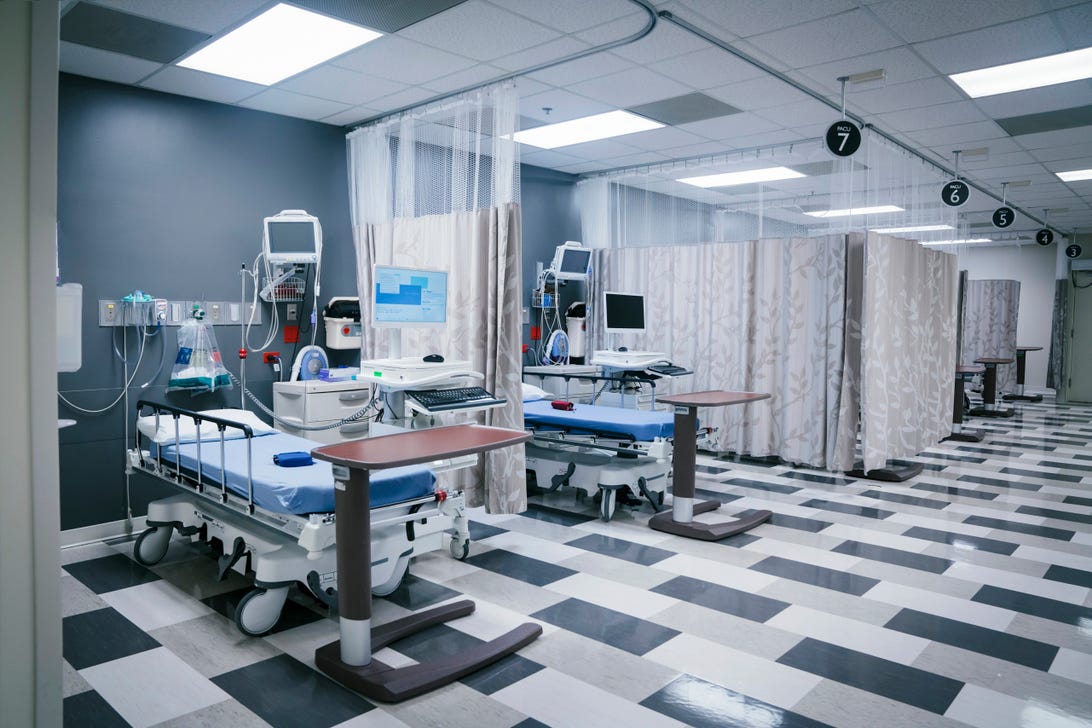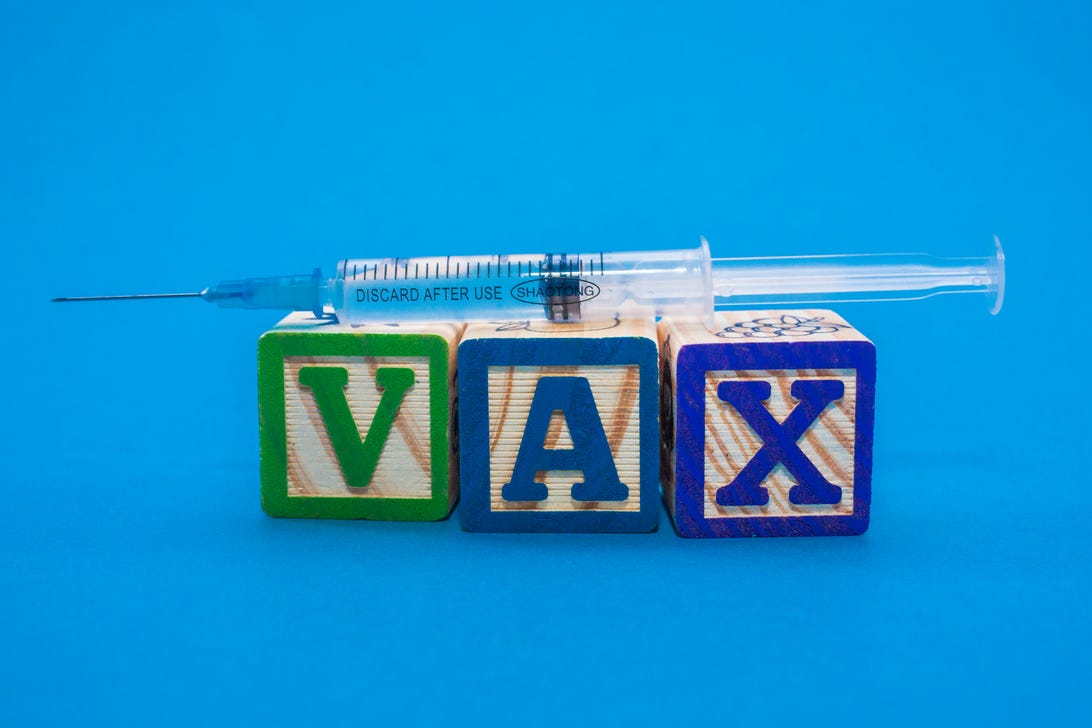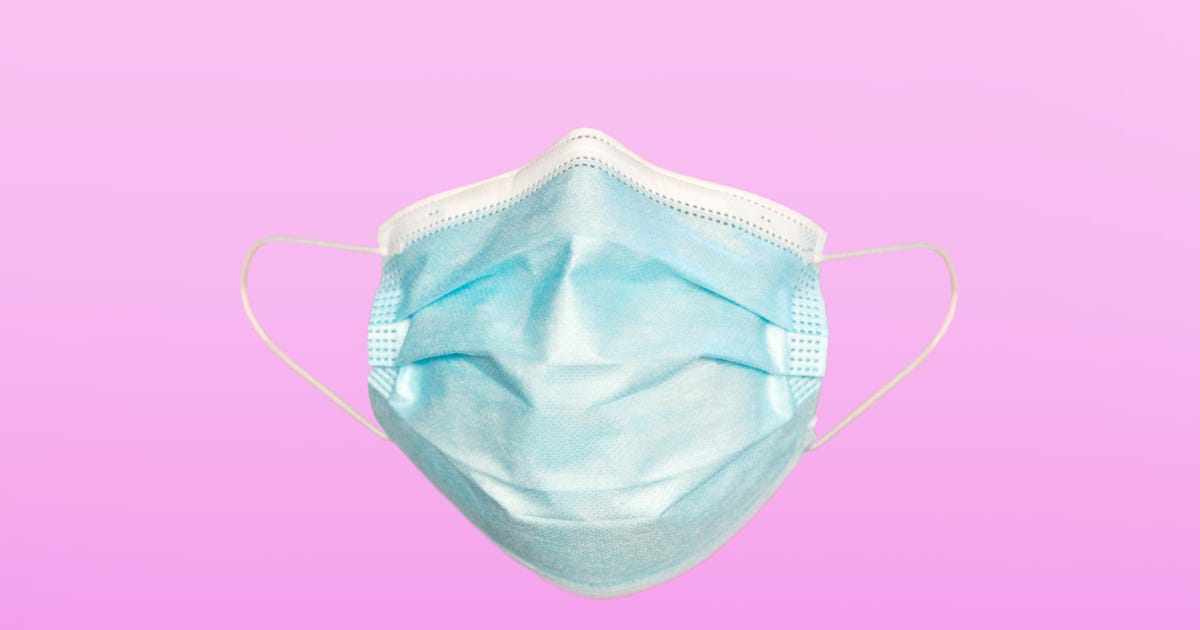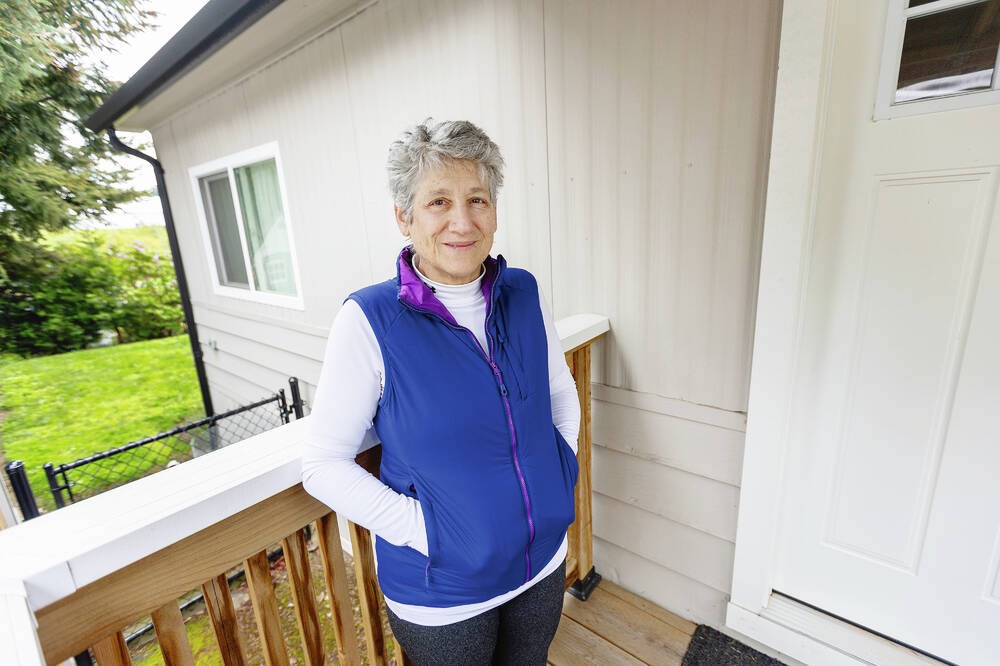Table of Contents
Maskot/Getty Images
This story is part of The Year Ahead, CNET’s look at how the world will continue to evolve starting in 2022 and beyond.
If the pandemic has taught us one thing, it’s how to take our health into our own hands.
We’ve become our own triage nurse, analyzing a sore throat with such urgency that, in another time, would’ve been considered a little obsessive. We’ve been asked to monitor our temperatures and even become citizen public health surveyors with the help of at-home COVID-19 tests. But one day (hopefully soon), the consequences of leaving the house with a sore throat won’t mean we’re risking someone’s life. Soon, our physical health will remain a core piece of our well being, but we’ll shake the neurosis of a pandemic mindset – hopefully, keeping our newfound sensitivity to public health and a desire to not harm others in the process.
But will our health care system?
“The pandemic accelerated a lot of changes that were kind of percolating in the background,” says Matthew Eisenberg, associate professor of health policy and management at Johns Hopkins Bloomberg School of Public Health. Eisenberg studies how neoclassical economics (“supply and demand”) applies to health care. While COVID-19 “catalyzed” many of the changes — and inequities — already budding in health care, he said, it will be up to policy makers as well as the supply-and-demand cycle of health care to decide what sticks and what doesn’t.
Telemedicine: a thing of the past, or the future?
Video-calls-as-doctor’s-visit wasn’t a tool created because of COVID-19, but the pandemic has transformed it from an obscure practice to the new way to do health care. Importantly, policy changes made during the pandemic helped knock down some barriers for telemedicine access, and helped providers get paid for it.
Private insurance companies as well as public payers (i.e. Medicare) relaxed their policies on telemedicine reimbursement for health care providers because of COVID-19. As more health care providers get paid for telemedicine (which gives them incentive to provide it), the more supply there is for patients, Eisenberg says.
“Prior to the pandemic, the only way a Medicare provider could be reimbursed for telemedicine would be if a patient was in a rural area where they could not physically travel to a provider,” he says. “Even then, they had to go to a specialized facility and do the telemedicine at some out-patient facility’s computer.”
Even through a computer screen, there are roadblocks to accessing health care. Before COVID-19, some patients, depending on where they live and what medical condition they have, would need to drive across state lines to access a specialist (which requires an amount of time and money many patients don’t have). The loosening of interstate licensure laws during the pandemic has allowed people to connect with a doctor miles away, and even fill a prescription across state lines.
Dr. Megan Mahoney is a family medicine doctor and the chief of staff at Stanford Health Care. Stanford Health Care, along with many other providers and organizations, have advocated to keep those restrictions loose once COVID-19 is no longer a public emergency, and the emergency rules no longer apply.
“We have noticed that there are states that don’t have a single pediatric endocrinologist,” says Mahoney. These specialists treat children with diabetes, for example. “We have a whole team of pediatric endocrinologists.”
But in order to participate in telemedicine, you need an internet connection. Mahoney called the bipartisan infrastructure bill, which has a $65 billion budget for expanding internet access to rural communities and helping families pay their internet bill, a “tremendous” help in health care access. In the new virtual health landscape, access to broadband is a “social determinant of health,” she says. Some policies and benefits put into place during the pandemic to help families access the internet, like the Emergency Broadband Benefit, were temporary. As broadband continues to mold in its form as a public good, its relationship to health care access will only strengthen.

FS Productions/Getty Images
Sliding into your doctor’s DMs
In addition to telemedicine, the pandemic also gave us nearly unlimited access to our doctors’ inbox through the patient portal. According to a report published in JAMA, which looked at instant messaging data between patients and their providers from March 2020 through June 2021, the number of patient messages increased, despite fewer patients seeking care in some specialties.
“The sheer demand that we’re seeing is very much a testament to the patients’ desire for this new channel of care,” Mahoney says.
Even older patients, whose relationship with technology sometimes gets a bad rap, are sending their doctors messages and embracing telemedicine, she says.
“That was what propelled and accelerated the transformation,” Mahoney says. When elderly people, who were originally reluctant to use telemedicine, were forced to use it in order to get care during the lockdown, “that helped them get over that hurdle.”
“What I’ve noticed is the digital divide, while we do need to be aware of it, it can be overcome and sufficiently addressed through additional education,” she says.
Some of that education for patients requires medical assistants to take on tech support roles. In addition to taking blood pressure and temperature when patients come into the room, they also need to make sure patients are comfortable signing into their patient account and feel comfortable with the technology, according to Mahoney.
That shift in the patient-provider dynamic, and more direct access to care, is necessary to maintain a system Mahoney says can help people get early intervention and, hopefully, prevent visits to the emergency room.
Many of the messages Mahoney receives from patients involve correcting misinformation patients have heard about COVID-19 — the type of preventative, education-based work that the current health care structure “does not support,” she says. For example, sustaining a more thorough patient-doctor messaging system would require providers be paid for their time consulting with patients off-hours. It also requires online communication to be in the patient’s language – a barrier for many people in the US who don’t speak English or speak it as a second language.
“I hope that health care can keep up with this cataclysmic shift that’s happening,” Mahoney said. “It will have to.”
There are arguments against telemedicine as the end-all-be-all. Dr. Thomas Nash, an internist in New York City, told The New Yorker in a June 2020 report that though telemedicine is “doable…I worry that it’s going to delay a good exam, and get in the way of deeper interactions between people and their doctors.” The informal setting of telehealth may also be less likely to pick up on big issues which routine in-person exams would normally detect, such as high blood pressure, California Healthline reported. And it’s more difficult to build an open relationship with your doctor through a screen than it is when you’re sitting in their office.
But that also assumes people had a relationship to lose in the first place. As of Feb. 2019, one year before the pandemic began, about one fourth of all adults and half of all adults under 30 didn’t have an ongoing relationship with a doctor, according to a report from the Kaiser Family Foundation. This is also a group that shows a strong preference for telehealth, and is the target audience for pre-pandemic care-on-demand services, including Nurx, which allows people to get birth control prescriptions and other medications online, sister sites Hims and Hers, Curology and more.

Sarah Tew/CNET
The great vaccine race
Scientists impressed the world by moving quickly to develop highly effective COVID-19 vaccines in record time – doses of Pfizer and BioNTech’s vaccine, with Moderna’s authorized right behind it, were available to the first round of eligible adults in the US less than a year after the the country went into lockdown. According to Nature, the fastest anyone developed a vaccine was for mumps in 1960, and that took four years from development to approval (Pfizer’s vaccine for people age 16 and up has full approval by the US Food and Drug Administration, while Moderna and Johnson & Johnson have emergency use authorization). While there’s much left to be desired about how the vaccines are distributed and accessed by populations in countries outside the US (only 8.9% of people in low-income countries have had a coronavirus shot), an estimate from the Yale School of Public Health reports the vaccines have saved about 279,000 lives and prevented 1.25 million hospitalizations as of early July 2021.
Part of the reason the vaccines were developed so quickly was because research on the technology they use was already underway (the mRNA vaccines were developed using information from HIV research). While the global society has shown we can be very efficient at producing effective and safe vaccines, don’t get your hopes up too high that it’ll happen that fast again, says Michael Urban, an occupational therapist and program director at the University of New Haven.
“The thing people have to remember is that the federal government pumped tons and tons of money into this development,” says Urban. “Globally, not just the United States.”
One reason for that is because COVID-19 had such a prominent impact on our economy. “The fact that this [vaccine] came out is because this is disrupting the fabric of life,” Urban says. “How we make money, how we engage with people – how we enjoy our lives.”
While it’s tempting to hope that because scientists banded together to create a vaccine for COVID-19 and the US government helped fund much of that work it will usher in more resources to find preventative measures and treatments for other diseases, it’s unlikely. The incentive for the government to subsidize research and development of treatments for other things that are more individualized, such as cancer or HIV, Urban says, might not be as strong, which leaves it up to the drug companies themselves. And without a public health emergency as transmissible and widespread as COVID-19, it’s unlikely drug companies will pour quite as much time and effort into finding treatments.
And when addressing a drug company that profits “billions off of cancer treatments,” for example, is it really in the best interest of the company to find an effective preventative measure?
“If they can do one shot and get rid of cancer, is it really in their best interest?” Urban says. “I hate to say that,” says Urban.
Two steps forward, two steps back
In addition to propelling us into trends that’ve been helpful in health care, the pandemic has magnified our shortcomings and has disproportionately affected the same people who have been mistreated by the medical system for years. Black and Hispanic Americans have been hospitalized with COVID-19, and died from the disease, in much greater numbers compared to white Americans.
Dr. Shantanu Nundy, a primary care physician and author of the book Care After Covid: What the Pandemic Revealed Is Broken in Healthcare and How to Reinvent It, told NPR in a May 2021 report that the pandemic scramble to find a testing site, get a vaccine appointment or access preventative care exposed those who might not have ever experienced it to the perils of health care.
“The pandemic magnified long-standing cracks in the foundation of the US healthcare system and exposed those cracks to populations that had never witnessed them before,” said Nundy in the NPR interview.
Another weak spot exposed because of COVID-19 was the US public health response, and its subsequent communication to the public about what to do when you’re sick. When the pandemic struck, public health agencies were relying on “old methodologies” in terms of quarantine requirements and testing rules for COVID-19, Urban says. Compared to other countries, we have issues with containment and quarantine restrictions that don’t always prevent people from spreading the virus, he says. The CDC’s latest isolation guidance for people who test positive for COVID-19, for example, has been criticized by some for being too relaxed and not requiring a negative test.
In the US, there’s a one-and-done mentality. “You do a one-time test, you’re cleared,” Urban says. “Have a nice day.”
When the next pandemic happens, he says the US is likely still not set up with the structure and tools needed to respond appropriately to a public health emergency. “We didn’t learn from the Spanish flu,” Urban says.
An early December report from the Global Health Security Index, an assessment of health security across the globe developed by the Johns Hopkins Center for Health Security and the Economist Impact, backs that up. According to the report, 195 countries across the globe are “dangerously underprepared for future epidemic and pandemic threats, including threats potentially more devastating than COVID-19.”
But importantly, the blame isn’t solely on public health agencies, Urban says. The CDC, for example, is “under pressure” to get people back to work and everyday life, Urban says. To do so, the agency has to work within US federal law and the vastly different state and local laws which govern what we can and can’t expect people to do.
Looking forward
As we move away from the immediate threat of COVID-19, our appreciation for mental health care is likely to stay. Eisenberg says that we may see specialized mental health services, including some practices that are virtual-only, and some that are a hybrid of in-office and virtual visits. There may also be a shift away from medication treatments for mental health conditions and more provider-focused psychotherapy, Eisenberg finds.
“It’s a small shift, but that could have big implications down the road,” he says.
While there are structural and policy changes needed to ensure everyone has autonomy over their health, the pandemic has shifted the way care providers approach health care. Now more than ever, there’s an emphasis on public health.
In an interview with the American Medical Association, Nundy explained the framework he believes is necessary to progress health care after the pandemic. Through the course of the pandemic, Nundy said, doctors “built a muscle” for operating with public health in mind.
“Let’s take that muscle and let’s start applying it to diabetes, let’s start applying it to mental health,” Nundy said. “So much more is possible.”
Correction, Jan. 14: The original version of this story misspelled Shantanu Nundy’s last name.
The information contained in this article is for educational and informational purposes only and is not intended as health or medical advice. Always consult a physician or other qualified health provider regarding any questions you may have about a medical condition or health objectives.





More Stories
The Final Pores and skin Care Schedule for Your Body
8 Ways to Get Treated When There Are No Primary Care Doctors
Vacation strategies to continue to keep seniors healthy, safe